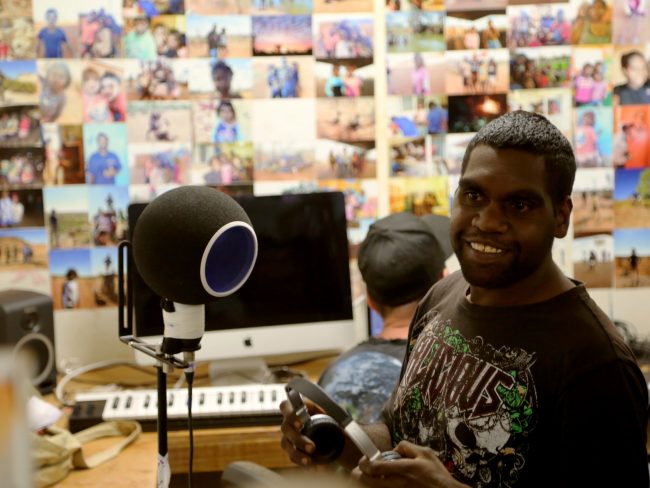Ampilatwatja & LA Meetings
Pronounced (um-bludder-witch), this community lies in the heart of Alyawarr country on the Sandover Highway. LA Meetings are subject to change, so please call the Area Manager to check dates.
“I too have a dream – I still got hope don’t drink that coke and don’t light that smoke. Brother turn the sound up, culture hold the ground up. Listen to the spirit in the wind singin around us … Go to school, learn my culture – how to sing my song. Be a dreamer, a leader and live life long. Sing along with the people of the Alyawarr Nations. ‘Coz change gunna come with this generation!”
Extract taken from Fly Back Home, The Desert Sevenz, The Alyawarr Sessions 2013
“Nantera Alywarr ngerra (we are all Alyawarr people). Nantera kultura dompenamati (learn from the old people) Awillichek dompenamati (listen to the old people) Dompenamati (old people)”
Extract taken from 2Wayz, The Desert Sevenz, The Alyawarr Sessions 2013
“We never moved from this country. This is our father’s father’s country. We can’t leave it.” Banjo Morton
Ampilatwatja is in the heart of Alyawarr country on the Sandover Highway. The Alyawarr people have always lived there and would travel between soaks (water sources) in the hot weather. The people of this region also have close ties to the people who live at Alpurrurulam, and early in the days of European settlement they would walk to Alpurrurulam to collect rations of food and tobacco. In the 1990s, with the return of Utopia Station to traditional ownership, the Alyawarr people of Ampilatwatja made a claim for their traditional homelands.
Ampilatwatja is the cultural heartland of the Alyawarr nation with art an important expression of the Alyawarr people’s connection with the land. Local artists are said to “exude a complex and progressive approach to depicting the traditional knowledge of dreaming and country through the translation of water holes and soakages, bush medicines and bush tuckers, mountains, sand hills and ant hills”. Their artworks retain the heritage and feature the cultural history and values of Alyawarr lore
History: The first European in the region was Charles Winnecke, a surveyor, who passed through in 1877. Although the Alyawarr people were shy of the Europeans, Winnecke’s expedition needed the help of the local people to find water in the desert. Freehold title leases were granted by the federal government around 1910 to establish cattle stations on Alyawarr land in an attempt to bring white settlers and development to central Australia. Traditional owners lost rights to culturally significant sites and to hunting grounds to make way for the grazing cattle.
In 1940, the land around Ampilatwatja was taken up by settler John ‘Nugget’ Morton, who is connected to the Coniston Massacre of Aboriginal people in 1928. The resultant Ammaroo Station became a gathering place for Alyawarr people in the ‘60s and ‘70s where many worked as drovers and fencers. In 1976 under the Native Titles Act Alyawarr families were granted a small plot at an area then known as Honeymoon Bore, about 10km from Ammaroo Station. This small settlement is what has now developed into the community of Ampilatwatja. In the 1990s the traditional owners gained small excisions from the local pastoral lease to continue their life on the land.
Services: Barkly Regional Council service centre and municipal workshops, Aherrenge community store, Aged Care Service, Night Patrol, Ampilatwatja Health Centre Aboriginal Corporation, Ampilatwatja Health Centre, police station.
Artists of Ampilatwatja: The Community Art centre began in 1999 and artworks produced maintain a strong focus on Alyawarr lore, with a particular emphasis on the natural landscape. Most of the artists paint Arreth, which translates to ‘strong bush medicine’. The paintings pay homage to the significance and use of traditional bush medicine, allowing an insight into their community. The community of Ampilatwatja made a conscious decision not to paint ‘altyerr’ dreaming stories. The artists paint their country where those stories sit. The work produced by the artists is recognisably distinct from other Aboriginal artistic communities, due to the application of fine dots and the often bright and child-like figurative depiction of the land.
Infrastructure: Ampilatwatja Staff House, regional fencing, workforce development, local road improvement.
Airstrip: The 1200m long airstrip caters mainly for the Mail plan and Royal Flying Doctor Service. It is a day/night strip but closes during heavy rain.

